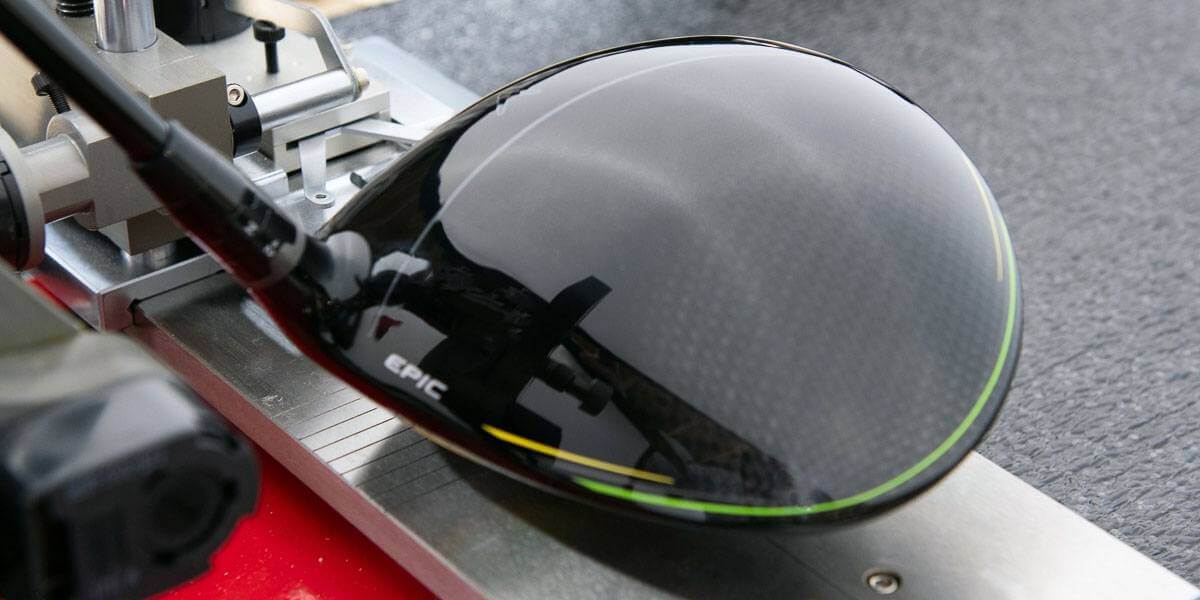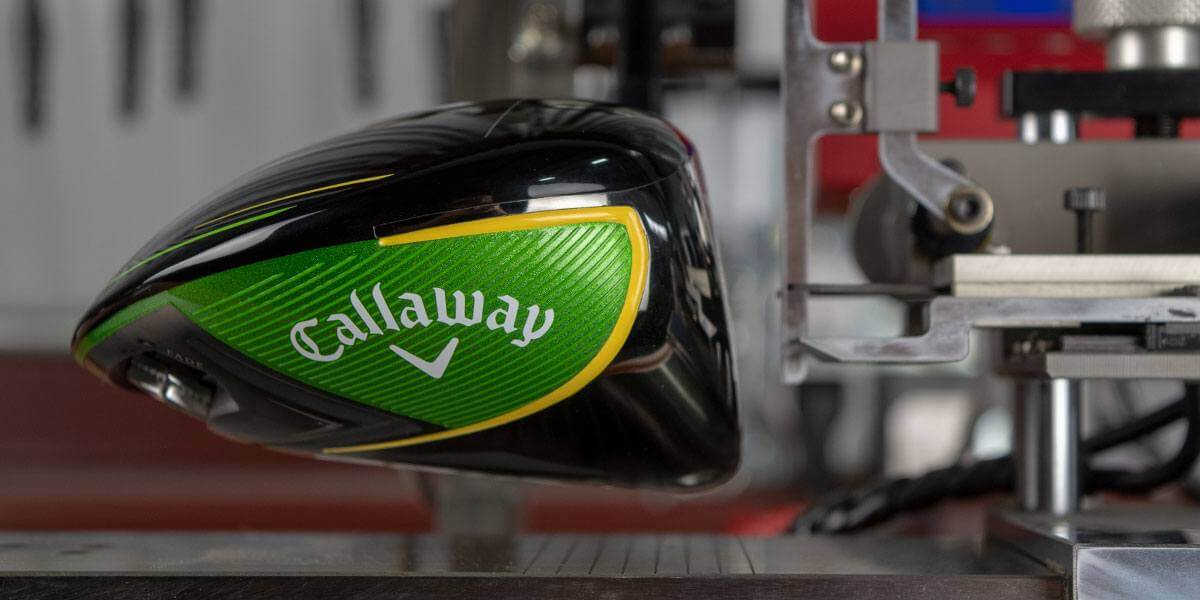INDEPENDENT & UNBIASED
MyGolfSpy accepts $0 advertising dollars from any of the major golf manufacturers. We believe in always putting #ConsumerFirst.
24
Products
Considered
210
Hours
Researched
9,237
Shots
Hit
40.1m
Readers
What if we told you there are specific characteristics in your golf swing that influence the way equipment performs? Swing Speed is definitely one of those variables that matter. That means the best-performing driver for a high swing speed PGA Tour player like Dustin Johnson may not actually be the best performer for you.
The desire to capture more data is why our 2019 Most Wanted Driver Test consisted of 35 real human golfers and captured more than 9,000 shots. The more we know about the performance of each of the 24 drivers in our test, the better we can help narrow your choices. Whether you’re an off-the-rack buyer, a guy who’s constantly tweaking your gear, or someone who is going to take the time to get fitted by a knowledgeable professional, we’re here to help you.
As we’ve done in the past, for 2019, we’re again segmenting our data to provide more meaningful information to the individual golfer. We’ve broken down our driver test results into three different swing speed categories. Today, if you’re a slow swing speed player (<94 mph), this data is for you.
While overall results for the Most Wanted Driver test yield small differences – the high swing speed group showed a whopping 9 yards of difference between the longest and shortest drivers.
Most Wanted For Slow Swing Speeds: Callaway EPIC Flash Sub Zero






Driver Buying Considerations
Performance should be your primary concern when buying a new driver, but there are some additional considerations you may want to think about before you make your purchasing decision.
ADJUSTABILITY
By leveraging the adjustability provided by club manufacturers, you can often turn a good driver into a great driver. Most everything on the market has an adjustable hosel which allows the golfer to tweak loft and face angle. Many golfers benefit from the draw and fade options available on drivers like the Callaway Epic Flash, Titleist TS3, and PING G410 Plus. Others benefit from the launch, spin, and MOI changes offered by front to back weight systems like those found on the Cobra F9 SpeedBack, Wilson Cortex, and Sub70 839D. For those looking for the best of both worlds, movable weight systems like those found in the TaylorMade M5 and PXG 0811 X GEN2 series, offer front to back as well as draw and fade positions.
SHAFT SELECTION
The shaft absolutely matters. For those who buy off the rack or take a DIY approach to club fitting, having a selection of stock offerings that span a variety of weight classes and include – at a minimum – low, mid, and high launch shaft options, can make the difference between a driver that doesn’t perform and one that goes into your bag.
Distance vs. Forgiveness vs. Shot Shape Correction
While most every manufacturer has its version of the fast AND forgiving story, most are trying to strike a right balance that fits within their brand’s identity. The reality is that pushing ball speed limits often comes at the expense of MOI while maximizing forgiveness often means giving up a bit of speed and adding a bit of spin. It’s up to you to weigh how much speed you want against how much forgiveness you need.
It should also be noted that to create a draw bias (anti-slice correction), weight must be moved to the heel. That means pulling weight from the back of the club, which often results in draw biased models being less forgiving (lower MOI) than standard models from the same family.
Cost
The drivers in this test range in price from $190 to $650, excluding any exotic shaft upgrades. The top performers tend to fall towards the higher end of that price range, though at $450 the F9 Speedback can be considered a relative bargain. While $500 is rapidly becoming the new entry-level, those leveraging a cost per yard formula will have a hard time justifying paying that much.

PRODUCT SPOTLIGHT - PING G410 Plus
New from the PING line this year, the G410 Plus performed exceptionally well for testers at swing speeds sub 95 mph. Boasting some of the highest average ball speeds and carry yards, the G410 is a driver that you shouldn't leave out of your consideration set this summer.
The G410 Plus features a forged steel face to produce high ball speeds, as well as a movable weight system on the perimeter of the driver to allow for trajectory optimization. Along with the improved weight adjustability, the new G410 offers users eight different loft/lie positions on the hosel sleeve; the two pair together to allow golfers to dial in their ideal launch conditions for exceptional performance on any course.
2019 Most Wanted DRIVER DATA
To filter and compare by club, use the drop-down list and checkboxes to select the only the drivers you wish to compare.
Expert Tip - Aligning Weights with Impact
Draw and fade settings aren't just for shot shape correction.
While club manufacturers typically talk about draw and fade positions in terms of shot shape correction, they can be leveraged to increase ball speed. If you're a relatively straight driver of the ball who favors the toe, moving weight to the fade position will better align the center of gravity with your point of impact, producing higher ball speed. The same is true for heel strikers and the draw position.
MORE BUYING TIPS
- Always be aware of shaft length. Clubs that are physically longer may produce a bit more distance on your best shots, but they’re also generally less accurate and less consistent. There is no industry standard for how to measure, so it’s not unusual for a company’s 45.5″ to measure closer to 46″. When demoing, be sure to consider the actual length of the clubs you’re testing. One may generate more distance, simply because the shaft is longer. In the absence of a ruler, a side by side examination can help you understand if a club is really longer (distance) or the shaft is just longer.
- When you use your wrench to add or remove loft, you’re also changing the face angle. Adding loft closes the face while reducing loft opens it. While we do leverage hosel adjustments to make small changes to launch and spin, very often, we use those same adjustments to alter starting direction and improve accuracy. The same approach can work for you.
- Much like age, the loft stamped on your driver is just a number – an often meaningless one at that. Every driver has 3 lofts: what’s stamped on the club, the actual loft a given manufacturer is trying to hit, and the actual measured loft. When all is said and done, there isn’t as much overlap between the three as we’d hope – and that’s before we talk about center of gravity placement and dynamic loft. It’s not usual for one brands 9.5 to have the same loft as another’s 10.5, so if you’re a 9.5 guy in one manufacturer’s lineup, don’t assume you’re a 9.5 in everyone else’s.
- Not all adjustable weighting systems are created equal. If you plan to leverage adjustability to its fullest potential, look for systems that allow you to move significant mass over a wider area of the clubhead while keeping the weight close to the perimeter of the golf club.
PRODUCT SPECIFICATIONS
Most Wanted Driver Spec Sheet
| Club | Stamped Loft | Measured Loft | Lie* | Length* | SwingWeight* | |
|---|---|---|---|---|---|---|
 | Bridgestone Tour B JGR Check Price | 9.5° | 10° | 63° | 45.5" | D2 |
 | Callaway EPIC Flash Check Price | 9° | 8.8° | 59.8° | 45.625" | D2.3 |
 | Callaway EPIC Flash Sub Zero Check Price | 9° | 9° | 57.5° | 45.5" | D3.5 |
 | Cleveland Launcher HB Check Price | 9.5° | 9.6° | 60.1° | 45.5" | D3 |
 | Cobra F9 Speedback Check Price | 9° | 9° | 58.2° | 45.25" | D1 |
 | Exotics EXS Check Price | 9.5° | 9.4° | 59.6° | 45.75" | D3.7 |
 | Mizuno ST190 Check Price | 9.5° | 9.2° | 60.8° | 45.125" | D2.9 |
 | Mizuno ST190G Check Price | 9° | 8.7° | 61.9° | 45.125" | D3.2 |
 | PING G410 Plus Check Price | 9° | 9° | 60.8° | 45.375" | D3 |
 | PING G410 SFT Check Price | 10.5° | 11.1° | 61.4° | 45.375" | C9 |
 | PXG 0811X Check Price | 9° | 8.3° | 60.8° | 45" | D4 |
 | PXG 0811XF Check Price | 9° | 9° | 60.8° | 45" | D3.1 |
 | Srixon Z585 Check Price | 9.5° | 9.2° | 64.8° | 45.375" | D4 |
 | Srixon Z785 Check Price | 9.5° | 9.4° | 62.8° | 45.375" | D4 |
 | Sub70 839D Check Price | 9.5° | 9.8° | 61.4° | 45.5" | D5.7 |
 | TaylorMade M5 Check Price | 9° | 9.1° | 57° | 45.75" | D5.4 |
 | TaylorMade M6 Check Price | 9° | 8.7° | 58.1° | 45.75" | D4.2 |
 | Titleist TS2 Check Price | 9.5° | 9.1° | 58.1° | 45.5" | D5.7 |
 | Titleist TS3 Check Price | 9.5° | 8.9° | 59.2° | 45.5" | D5.1 |
 | Tommy Armour Atomic Check Price | 9° | 9.2° | 61.9° | 45.375" | D4.9 |
 | Tour Edge HL3 Check Price | 9.5° | 9.4° | 57.4° | 45" | D2 |
 | Wilson Cortex Check Price | 9° | 9° | 59° | 44.75" | D6.4 |
 | Wilson D7 Check Price | 9° | 9.4° | 64.2° | 45.5" | 0 |
 | XXIO X Check Price | 9.5° | 10.5° | 60.4° | 46" | D6 |
* denotes measured value vs. manufacturer’s stated spec.
FAQ
Buying a New Driver
Q: How often should I buy a new driver?
A: While on rare occasions there are quantifiable year over year breakthroughs, typically it takes 3-5 years for manufacturers to make any significant performance gains. With the USGA further tightening restrictions on manufacturers, it’s possible, even likely, that it will take longer still moving forward. Our recommendation is to buy a new driver only when it appreciably outperforms what is already in your bag. Of course, if you want a new driver because you want a new driver, that’s fine too.
Q: With all the talk of new face technology, is there one driver that produces significantly more ball speed?
A: Across our test pool as a whole, we found no significant ball speed advantage that can be attributed to face technology. It’s true that some drivers worked significantly better for individual golfers than others, but thus far, we’ve found no evidence to suggest that any one brand has a significant ball speed advantage over its competitors.
Q: Does the shaft matter?
A: Absolutely. While changes to spin and launch and spin differences are rarely massive, shaft changes frequently lead to improved accuracy, tighter dispersion, and greater overall consistency.
Q: What should I look for when testing drivers?
A: While golfers have been conditioned to consider distance to the exclusion of nearly everything else, we recommended looking at the little numbers and looking for small circles. When comparing metrics like distance and ball speed, be sure to look at your standard deviations (the small numbers usually found under the big ones on the data screen). Smaller numbers mean better consistency which will usually mean more than an extra yard or two on the golf course. Similarly, look for tighter dispersion ellipses (small circles). We can’t understate the importance of consistency with the driver.
Q: Is there any downside to adjustability?
A: Yes, but… With many designs, adjustable hosels weigh significantly more than their glued alternatives, so manufacturers have to find workarounds to offset the additional weight in an area where additional weight is undesirable. Furthermore, movable weight systems require complex physical structures that eat up otherwise discretionary mass and often have sound and feel consequences. That said, in most cases, the fitting versatility more than offsets those negatives. This is especially true for golfers who choose not to work directly with a fitter.
How Adjusting Loft Impacts Launch and Spin
Did you know that adjusting the loft of your driver by 1° changes launch angle by approximately .8° and alters spin by +/-300RPM?
Most Wanted
Q: How are the drivers in test fit to each golfer?
A: We use a fitting process that we call fit from stock. Drivers are fit to each tester using the stock, no up-charge options from each manufacturer. We test with stamped lofts between 9° and 10.5° and fully utilize the fitting capability within each manufacturer’s lineup. This includes leveraging, loft, lie, and face angle adjustability (hosel), movable weights, and available shafts.
Q: How is the Most Wanted Driver Determined
A: To determine the Most Wanted Driver, we look at a variety of performance metrics based on data collected with Foresight GCQuad Launch Monitors. These metrics including ball speed, distance (carry and total), strokes gained, accuracy, and dispersion (shot area). As part of our analysis, we consider the standard deviations of key metrics (consistency), as well as the statistical reliability of the data on a per tester and club basis.
Q: How do you break down the test by Swing Speed?
A: In order to determine the best performing drivers at a given swing speed, we broke the data down into even groups based on testers’ average swing speed. For the low swing speeds, 12 testers in our Most Wanted Driver Test produced driver swing speeds below 95 mph.
Q: How is the “Longest” driver determined?
A: To determine the Longest Driver, we consider the average total yards across the test pool along with the statistical reliability of that data. We also look at a narrower subset of the data that includes only the longest few shots hit by each tester with each club.
Q: How is the “Most Forgiving” driver determined?
A: To determine the Most Forgiving Driver, we focus on a narrower set of metrics that includes: Shot Area (dispersion), Accuracy, and the average standard deviation for ball speed and carry yards.
Q: How much does subjective feedback like looks, sound, and feel factor into your rankings?
A: ZERO. Our rankings are based purely on launch monitor data and quantifiable performance metrics.







































Vern Endres
4 years ago
I just went to my local merchandiser and hit all the popular drivers in an A flex shaft. My swing speed is 88-91 M.P.H. and found the Ping G410 to be 20 yards longer than the Epic Flash, Taylor M6, Cobra, and Tour edge. I have been a clubmaker since the mid-80″s and understand the physics of a golf club. To be 20 yards longer peeked my interest in the Ping. I presently play a Callaway Rogue and do like its consistency and accuracy.